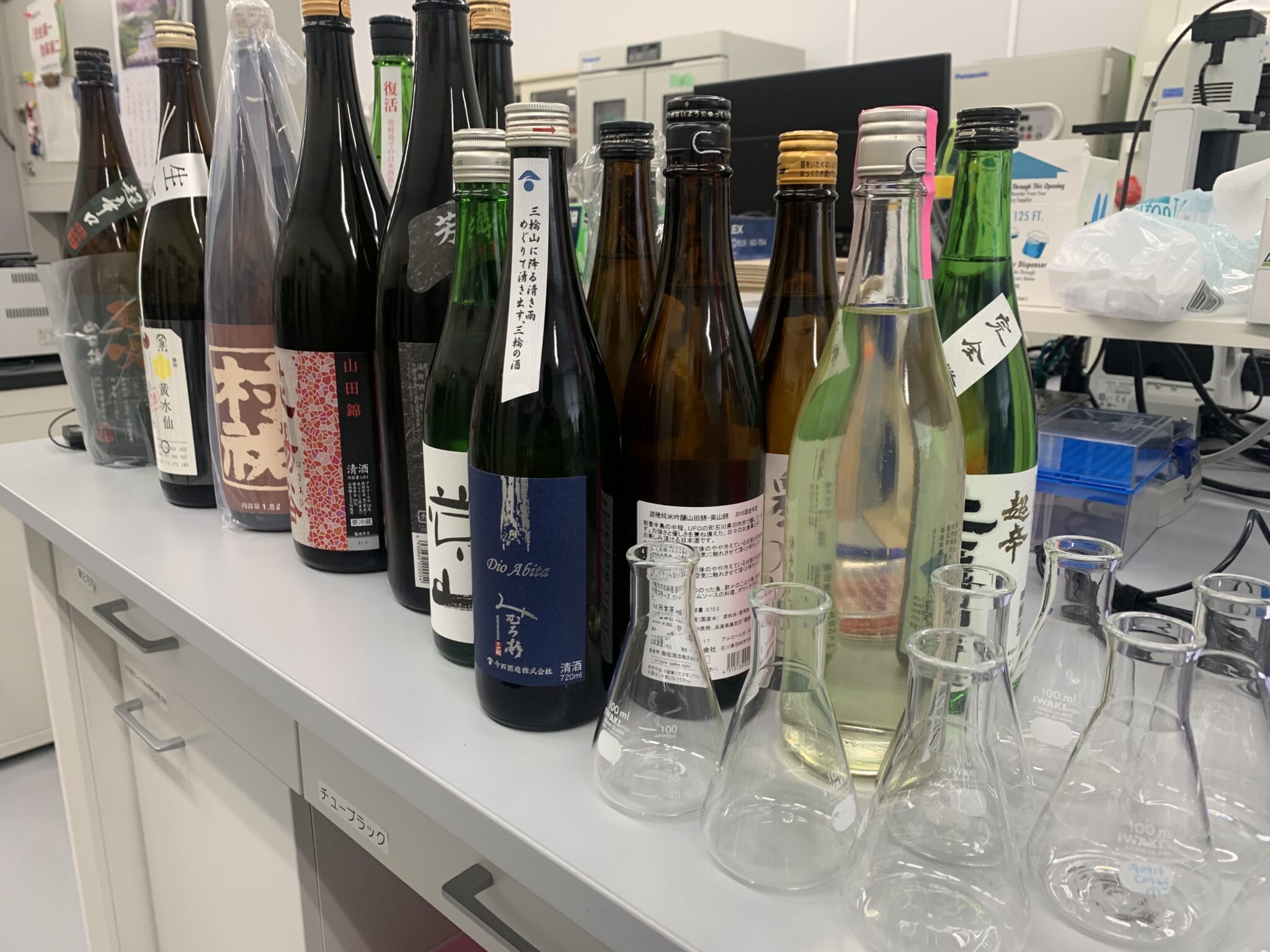
Introduction to Data Science in Sake Production
In this article, we will introduce research related to alcoholic beverages such as Japanese sake.
■ Sulfur Index Analysis Euglena has a patented analysis technology called "Sulfur Index Analysis." This technique utilizes LC-MS/MS with specific derivatizing reagents for sulfur compounds, enabling highly sensitive and comprehensive detection of trace amounts of sulfur compounds that cannot be detected using conventional methods. Specifically, the technology allows simultaneous analysis of approximately 50 types of sulfur compounds, including organic sulfur compounds, inorganic sulfur compounds, and both oxidized and reduced forms. Sulfur Index Contract Analysis Service
■ Relevance of Alcohol Beverages and Sulfur Index How does the Sulfur Index relate to alcohol beverages? The Sulfur Index was developed to measure the quantity of sulfur compounds widely used in countless redox reactions occurring in living organisms. By examining this, we can understand the oxidation-reduction reactions taking place within living organisms. Moreover, alcoholic beverages like Japanese sake and wine are produced through the fermentation process where various substances are fermented by fungi, including yeast, to produce alcohol. Therefore, the taste of Japanese sake and wine is closely linked to the metabolic activity of fungi, particularly the metabolism of sulfur compounds.
■ Analysis of Beer Beverages Using Sulfur Index The Advanced Technology Research Division of Euglena conducted studies using the Sulfur Index technology to analyze alcoholic beverages. Dr. Ohtsu's research revealed that commercially available beer beverages can be grouped into three categories: beer, low-malt beer, and non-alcoholic beer. The analysis utilized machine learning, specifically multidimensional scaling, to examine the data. This analysis technique is effective in revealing relationships within the data.

■ Analysis of Japanese Sake Based on the previous research results, the Sulfur Index is considered useful for classifying and evaluating various fermented foods. To further confirm the usefulness of the Sulfur Index, our company conducted an analysis of Japanese sake, an alcoholic beverage. Part of the results is shown as follows.

The left plot shows dimensionally reduced metabolomics data, including the Sulfur Index. The middle plot represents the quantitative evaluation of Japanese sake using the sake meter value and acidity. The right plot maps the sensory evaluation conducted by sake experts into two dimensions. To make the relationships clear, the color-coding of the sensory evaluation (right plot) by the experts was applied to the left two plots using k-means clustering. The results indicate that the dimensionally reduced metabolomics data on the left provides higher accuracy in grouping compared to the plot of sake meter value and acidity in the middle. Alcoholic beverages like beer and Japanese sake are fermented foods with deep involvement of microbial activities in their production processes. In understanding the relative relationships of fermented foods, comprehensive analysis techniques such as the Sulfur Index for sulfur compounds and dimensionality reduction within machine learning prove useful. This data-driven approach enables distinguishing the nuances of taste differences, as seen in premium sake, efficiently supporting product strategies and customer analysis.
■ Introduction of Sulfur Index Contract Analysis Service The Sulfur Index methodology, combined with the remarkable progress in data science, holds promise for various food analyses. If you are interested in leveraging the Sulfur Index, please refer to the link below.
株式会社ユーグレナ|サルファーインデックス受託分析サービス (euglena.jp)
